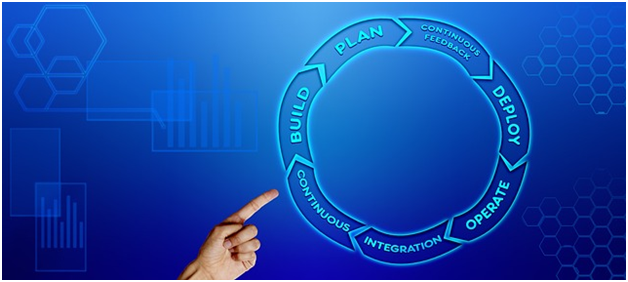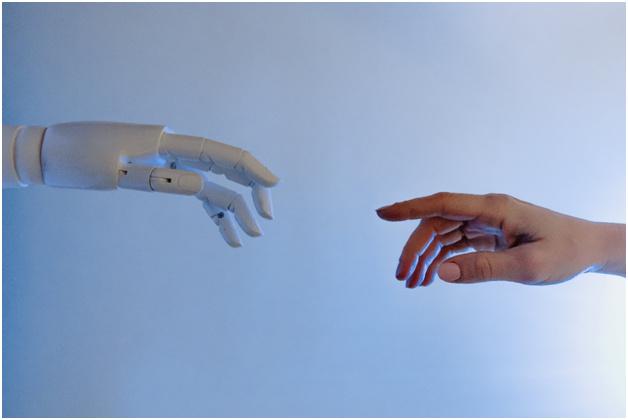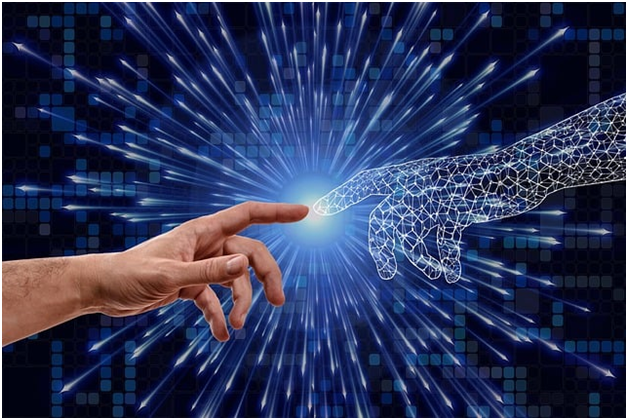Impact of Automation on Stress Reduction & Productivity

According to the American Institute of Stress, more than 83% of American workers in 2022 reported that they suffered from workplace-related stress. What’s more, 39% of respondents in the same study stated that this stress was directly related to workload. Workplace stress is a minefield for the mental health of Americans, with more than one million estimated to miss work each day for stress-related reasons. It’s also harmful to companies, with billions of dollars each year going toward making up for lost productivity and re-hiring workers. In today’s fast-paced work environments, where stress is doing so much damage to overall efficiency, it is more crucial than ever to come up with innovative solutions to this problem.
One aspect of workplace operations that plays an important role in solving this problem is automation. In its many forms, automation serves as a transformative tool for optimizing workflows, reducing stress, and enhancing productivity. By using key technologies to systematize business processes, automation has become vital for the daily functioning of modern society.
In the contemporary workplace, automation is only growing in importance. Using technology to streamline workflows can reduce repetitive and monotonous tasks, improve work-life balance, and allow individual employees to focus on more strategic and creative aspects of the work that needs to be done. On a company-wide level, automation is used to increase productivity, save money, and maintain a focus on competitive innovation. Understanding automation and its applications is important in the current climate, as it has the potential to revolutionize how we live and work.

Image by Dirk Wouters from Pixabay
Understanding Automation: Types and Technologies
Although “automation” is a common buzzword for individuals, news cycles, and companies alike, many don’t know the true meaning of the term. Encyclopedia Britannica defines automation as the “application of machines to tasks once performed by human beings or, increasingly, to tasks that would otherwise be impossible.” Additionally, the term “automation” suggests the regulated integration of these machines into a work system.
Automation comes in a variety of forms. At the most basic level, automation is technology that, once set up, can perform a process of commands without human manipulation or intervention. Although forms of automation are becoming more complex, many daily aspects of our modern lives are also affected by automation in ways one might not realize. For example, automatic coffee makers, thermostats, and credit card bill payments are all automated systems prevalent in the individual day-to-day experience.
One common form of automation is process automation, which is the use of key software and technologies to advance business-related goals and processes specifically. Process automation has the potential to make changes to and affect the workforce and labor markets, as it has become essential and is ever-changing in corporate functions.
Another form of automation that has seen great advancements in recent years is AI-driven automation, also known as “cognitive automation” and “intelligent automation.” This type of automation uses artificial intelligence as a “decision engine” to automate business processes and optimize workflows, taking the self-governed aspect of the process to a more advanced level.
Especially in the workplace, there are several fundamental technologies powering automation, including:
Artificial Intelligence: Artificial intelligence, or AI, is defined by computer scientist John McCarthy as “the science and engineering of making intelligent machines, especially intelligent computer programs.” One common way AI is used in workplace automation is by taking over repetitive or less-desirable tasks. For example, many companies now use chatbots for customer support and to efficiently direct queries to the right department.
Robotics: Robotics is the engineering and construction of machines (called robots) that can perform human-like tasks. There are many types of robots with varying degrees of self-sufficiency used in modern workplaces. In industrial settings, robots are often used to automate assembly-line processes, allowing products to be constructed with higher efficiency and levels of sanitation. Robots are also used in the medical field, with systems like the daVinci machine performing complex surgeries with a greater level of accuracy than humans can.
Cloud Computing: Cloud computing is another useful tool in business-related automation, and is defined as the availability of computing resources (such as storage, networking capabilities, and more) as a service over the internet. Many companies use cloud computing for data storage, as it eliminates the need for companies to manage their own servers and data.

Image by Gerd Altmann from Pixabay
Automation and Productivity: A Quantifiable Impact
A good way to judge the impact of automation on productivity across industries is by looking into data-driven insights. A 2017 study by McKinsey Global Institute analyzed over 2,000 work activities across 800 occupations and found that “almost half the activities people are paid almost $16 trillion in wages to do in the global economy have the potential to be automated entirely” using existing technologies. This potential for automation varies widely across different sectors: manufacturing occupations with predictable tasks were found to have opportunities for automation at above 90% while customer service occupations were at below 30%. Of course, these statistics are constantly changing as new technologies develop, especially in the age of artificial intelligence.
When looking at measurable outcomes, it is clear that automated processes tend to be much more efficient than non-automated processes. Across various industries, automation has been found to improve outcomes like turnaround times, error rates, and resource utilization. Typically, companies are able to track these automation-related improvements by using APM systems, a type of application performance management software.
There are many real-world examples of companies that leveraged automation to achieve significant productivity gains. One such example is Amazon, a company that utilized innovative automation readily and early to maximize growth. Automation in Amazon’s warehouses allows the company to pack and ship goods to customers at a much faster and accurate rate than with workers alone. In a different sector, a leading cloud communications provider, Vonage, used automation technologies for quote creation and customer data consolidation. These changes allowed the company to reduce phone provisioning time from an average of four days to just four minutes, all while reducing the average number of errors. Across industries, automation and key new technologies have made a quantifiable impact on operational efficiency and business success.

Image by tomaskallus from Pixabay
Reducing Workplace Stress through Automation
In addition to quantifiable profit and resourced-based outcomes, automation also plays a large role in reducing stress for individual workers. Across many sectors, employees suffer from the burden of repetitive tasks. Research by the University of Wolverhampton found that repetitive and monotonous tasks contribute to negative emotional states, make employees more likely to suffer from “chronic boredom,” and may even increase the chances of depression. Additionally, the American Institute of Stress has also suggested that “having monotonous or short, repetitive tasks and no opportunity to rotate tasks” is a contributor to workers’ daily stress.
Automation has proven in real-world cases to be a stress reliever in the workplace. Successful implementations of automation can free employees from tedious tasks and improve work-life balance. A large New York City-based nonprofit, The New York Foundling, implemented automation software in recent years to replace a number of manual, paper-based processes and data entry. As a result, the company saved over 100,000 hours of manual work over the course of a year and successfully reduced its staff turnover rate.
Research findings and expert opinions also suggest that automation can foster a healthier and more positive work environment. A 2021 survey by the company UiPath found that more than two-thirds of global office workers “feel they are constantly doing the same tasks over and over again” and that more than half think their jobs “don’t allow them to be as creative as they’d like to be.” Especially with the rise of remote work post-2020, employee satisfaction, mental health, and well-being are more important than ever. Using automation for monotonous tasks like data entry, emails, and assembly-line work allows employees to focus on the more fulfilling aspects of their jobs, like strategic and creative work. Additionally, automation provides more flexibility in work schedules and gives opportunities for hybrid working models and learning new skills. Overall, implemented correctly, automation can have a major effect on the experience of each individual employee.

Photo by Tara Winstead
Balancing Automation and the Human Touch
Of course, when it comes to the implementation of automation there is one aspect that cannot be ignored: the irreplaceable human element. Even in automated environments, maintaining human interaction and emotional intelligence is crucial for workplace quality of life, customer service, and true innovation. The human touch is not something that automation or artificial intelligence can replicate, and the more creative, sensitive, or emotional aspects of a business’s operations should at least have human oversight to maintain balance.
The good news about this is that automation is not all or nothing: there are strategies to balance and effectively integrate automation without compromising personalization and customer relationships. Although automation has become increasingly complicated, simple is always best. Automating simple tasks like data entry and emails is always the best place to start for increasing productivity. Anything creative, strategic, or innovative should generally be left for the company’s human workforce.
When automating different aspects of a company’s systems, it is important to also keep ethical considerations and user trust at the forefront of the conversation. Certain sectors like the medical field and positions like HR-related roles have potential ethical pitfalls when it comes to automation that absolutely must be considered, especially when using AI. Human resources, or HR, is a field where having compassion is a must, as is fostering diversity and inclusion. Removing the human element from these types of roles could result in negative outcomes and emotions from both employees and customers, and as a result automation in these areas should be handled with care.

Image by Gerd Altmann from Pixabay
Challenges and Opportunities of Automation
Technical hurdles are also a concern when it comes to automating workplace practices. Integration of automated systems into a company, customization for individual needs, and data security are all elements to take into consideration. This is where application performance management comes into play, as monitoring current systems and recording data from any new automation or changes made is crucial for the evolution of a company into its most efficient and innovative state.
In a new age of automation, employers and employees alike are concerned about how it might reshape the job landscape, and for good reason. Implemented too quickly, automation carries the risk of making certain repetitive jobs redundant without giving workers the time to find a new niche. In the workforce, continuous learning and upskilling are essential for mitigating this risk. A study by the Capgemini Research Institute predicted that demand for “emotional intelligence” as a skill is expected to increase sixfold in coming years, as manual labor will be increasingly automated.
Although automation poses risks, it also carries great opportunities for workers and companies alike. Rather than resisting the coming shift in required workforce skills, a proactive approach to adapting to changes brought about by automation is the best path forward. With repetitive and monotonous tasks out of the way, workers will be able to focus on softer skills like creativity and emotional intelligence, which tend to have better mental health outcomes as well.

Image by Gerd Altmann from Pixabay
Conclusion
Overall, the current age of automation possesses an absolutely transformative potential for reducing stress, enhancing productivity, and fostering a positive work environment. Automation in the modern day goes beyond machine labor or the classic example of replacing an assembly-line worker with a robot; in the age of AI, automation has a much greater scope.
Individuals and companies alike should look to the future to implement automation solutions in their workplaces to create a more efficient and fulfilling work experience. These opportunities automation brings come with challenges, as workers’ skills will need to gradually shift from manual and physical labor to soft skills and emotional intelligence. However, when implemented correctly, automation allows workers to reduce repetitive and monotonous tasks and largely improve their mental health.
Of course, responsible and ethical adoption of automation is crucial, as is the consistent monitoring of automated solutions by an applications management system. Carefully and thoughtfully implemented automation using key technologies like artificial intelligence, robotics, and more is the global business landscape of tomorrow. In reducing employee stress, automation is key to a sustainable and rewarding future of work.
Works Cited:
- https://www.oracle.com/chatbots/what-is-a-chatbot/
- https://www.britannica.com/technology/robotics
- https://www.uchealth.com/services/robotic-surgery/patient-information/davinci-surgical-system/